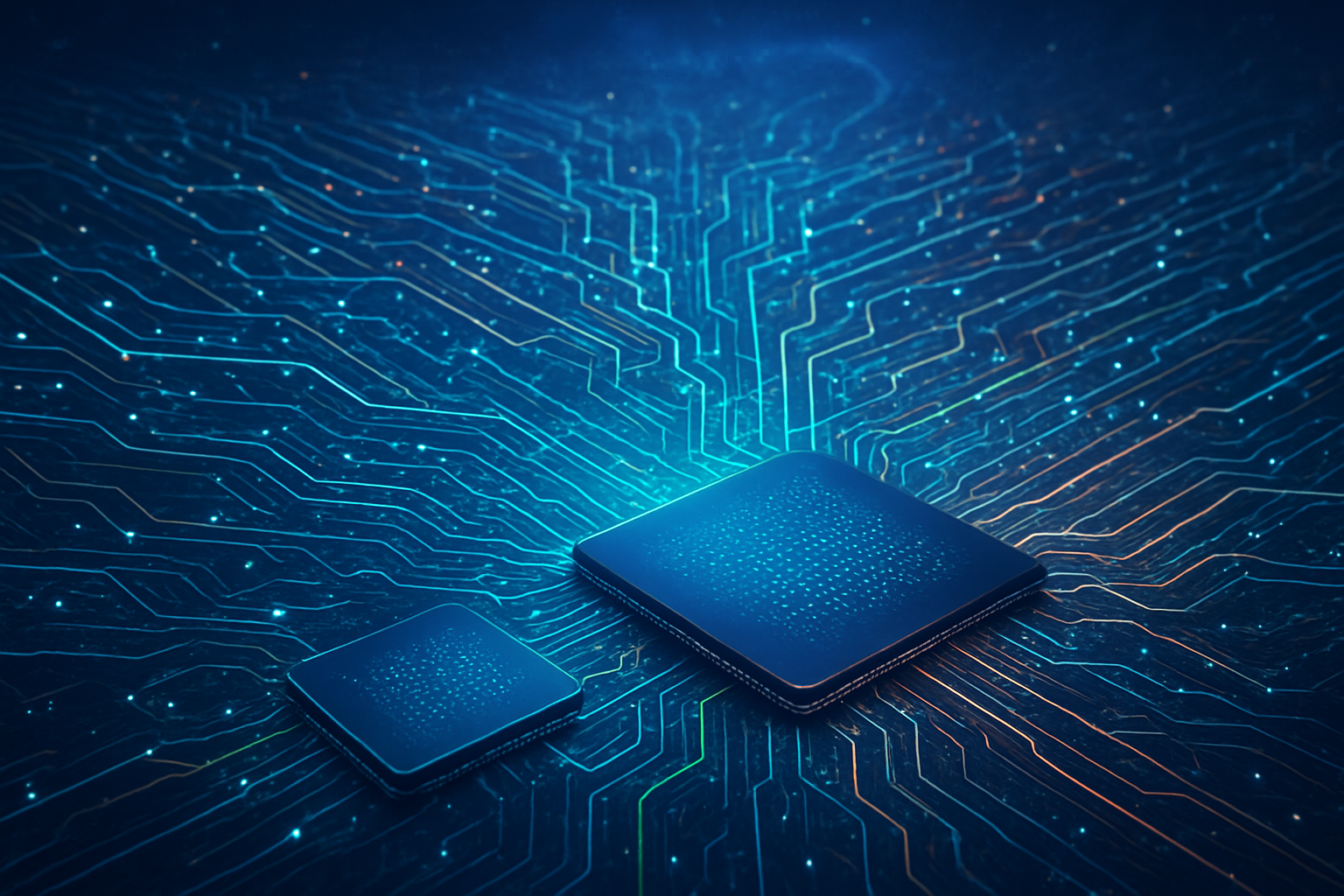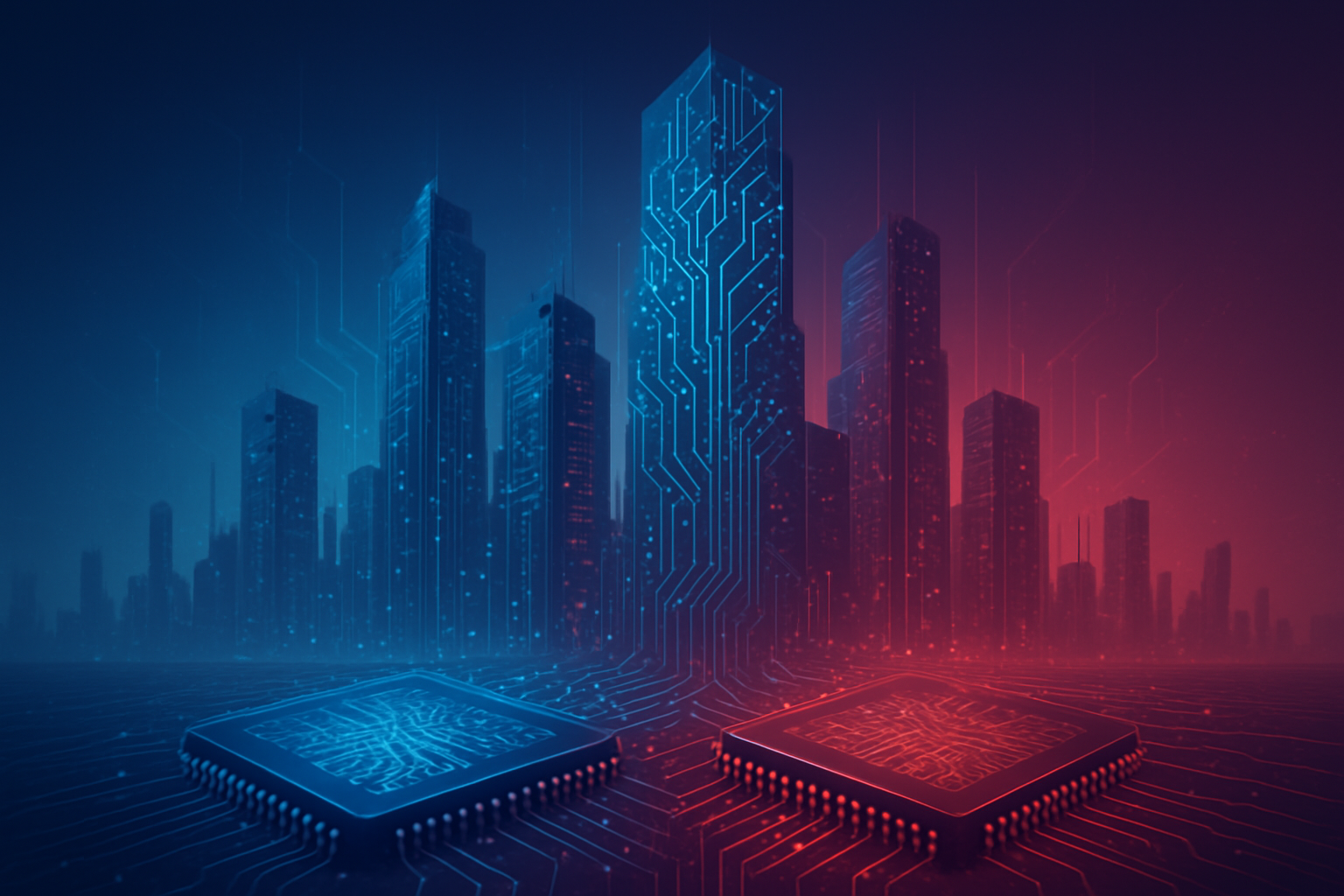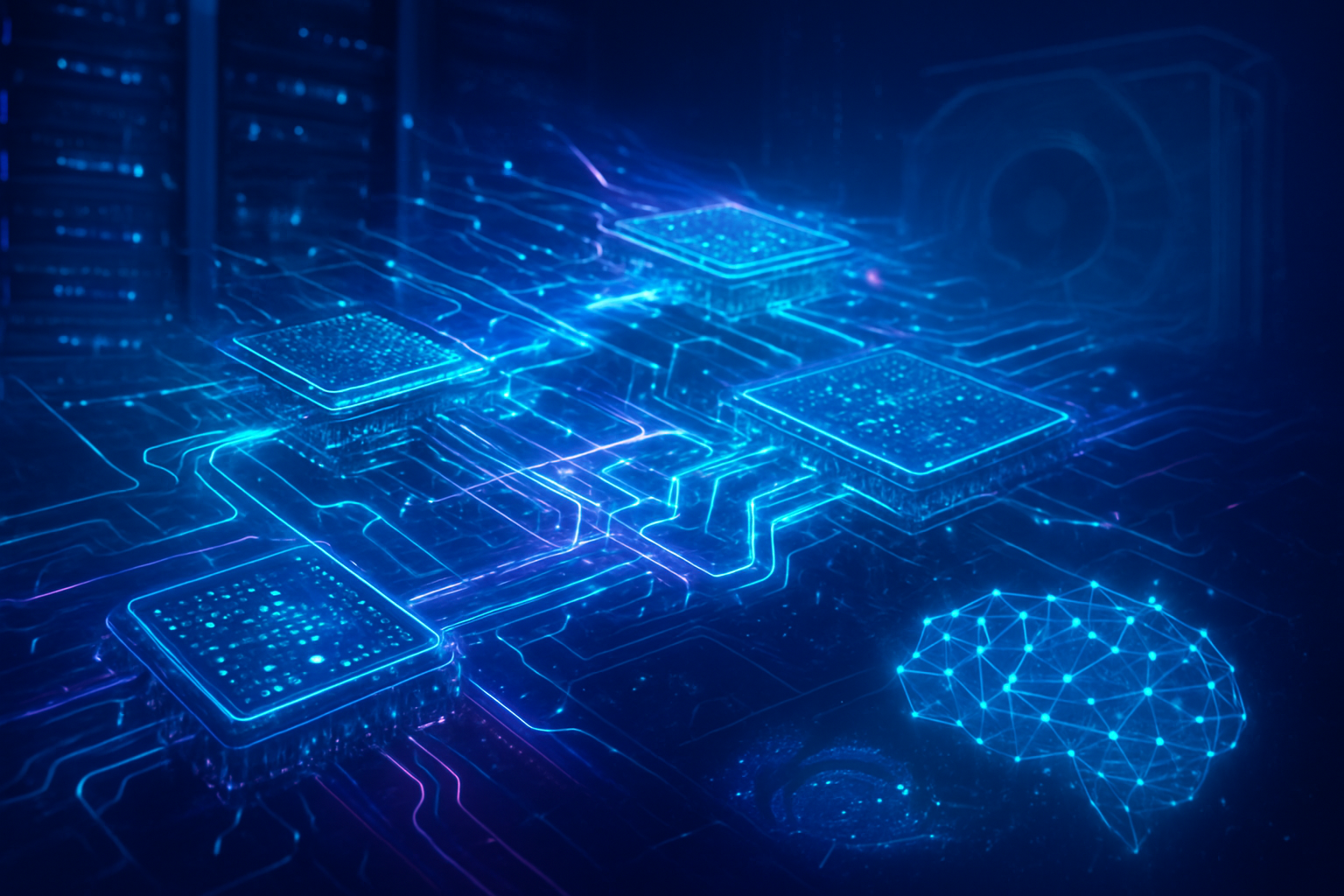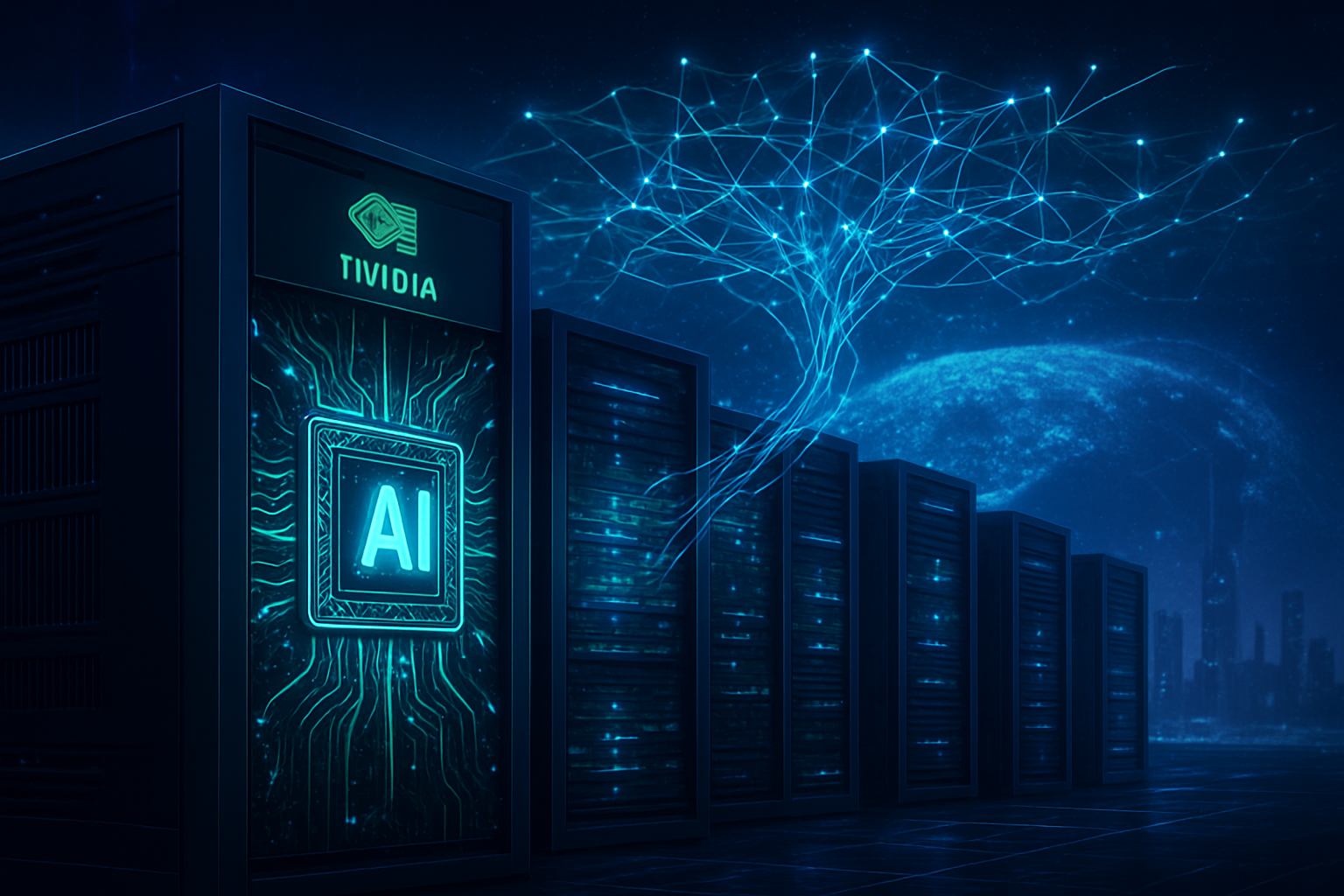Santa Clara, CA – November 20, 2025 – Nvidia Corporation (NASDAQ: NVDA) today stands at the zenith of the artificial intelligence revolution, having delivered a blockbuster third-quarter fiscal year 2026 earnings report on November 19, 2025, that shattered analyst expectations across the board. The semiconductor giant reported unprecedented revenue and profit, primarily fueled by insatiable demand for its cutting-edge AI accelerators. Despite these stellar results, which initially sent its stock soaring, investor fears swiftly resurfaced, leading to a mixed market reaction and highlighting underlying anxieties about the sustainability of the AI boom and soaring valuations.
The report serves as a powerful testament to Nvidia's pivotal role in enabling the global AI infrastructure build-out, with CEO Jensen Huang declaring that the company has entered a "virtuous cycle of AI." However, the subsequent market volatility underscores a broader sentiment of caution, where even exceptional performance from the industry's undisputed leader isn't enough to fully quell concerns about an overheated market and the long-term implications of AI's rapid ascent.
The Unprecedented Surge: Inside Nvidia's Q3 FY2026 Financial Triumph
Nvidia's Q3 FY2026 earnings report painted a picture of extraordinary financial health, largely driven by its dominance in the data center segment. The company reported a record revenue of $57.01 billion, marking an astounding 62.5% year-over-year increase and a 22% sequential jump, comfortably surpassing analyst estimates of approximately $55.45 billion. This remarkable top-line growth translated into robust profitability, with adjusted diluted earnings per share (EPS) reaching $1.30, exceeding consensus estimates of $1.25. Net income for the quarter soared to $31.91 billion, a 65% increase year-over-year. Gross margins remained exceptionally strong, with GAAP gross margin at 73.4% and non-GAAP at 73.6%.
The overwhelming force behind this performance was Nvidia's Data Center segment, which posted a record $51.2 billion in revenue—a staggering 66% year-over-year and 25% sequential increase. This surge was directly attributed to the explosive demand for Nvidia's AI hardware and software, particularly the rapid adoption of its latest GPU architectures like Blackwell and GB300, alongside continued momentum for previous generations such as Hopper and Ampere. Hyperscale cloud service providers, enterprises, and research institutions are aggressively upgrading their infrastructure to support large-scale AI workloads, especially generative AI and large language models, with cloud providers alone accounting for roughly 50% of Data Center revenue. The company's networking business, crucial for high-performance AI clusters, also saw significant growth.
Nvidia's guidance for Q4 FY2026 further fueled optimism, projecting revenue of $65 billion at the midpoint, plus or minus 2%. This forecast significantly outpaced analyst expectations of around $62 billion, signaling management's strong confidence in sustained demand. CEO Jensen Huang famously stated, "Blackwell sales are off the charts, and cloud GPUs are sold out," emphasizing that demand continues to outpace supply. While Data Center dominated, other segments also contributed positively, with Gaming revenue up 30% year-over-year to $4.3 billion, Professional Visualization rising 56% to $760 million, and Automotive and Robotics bringing in $592 million, showing 32% annual growth.
Ripple Effects: How Nvidia's Success Reshapes the AI Ecosystem
Nvidia's (NASDAQ: NVDA) Q3 FY2026 earnings have sent powerful ripples across the entire AI industry, validating its expansion while intensifying competitive dynamics for AI companies, tech giants, and startups alike. The company's solidified leadership in AI infrastructure has largely affirmed the robust growth trajectory of the AI market, translating into increased investor confidence and capital allocation for AI-centric ventures. Companies building software and services atop Nvidia's CUDA ecosystem stand to benefit from the deepening and broadening of this platform, as the underlying AI infrastructure continues its rapid expansion.
For major tech giants, many of whom are Nvidia's largest customers, the report underscores their aggressive capital expenditures on AI infrastructure. Hyperscalers like Google Cloud (NASDAQ: GOOGL), Microsoft (NASDAQ: MSFT), Amazon (NASDAQ: AMZN), Meta Platforms (NASDAQ: META), Oracle (NYSE: ORCL), and xAI are driving Nvidia's record data center revenue, indicating their continued commitment to dominating the cloud AI services market. Nvidia's sustained innovation is crucial for these companies' own AI strategies and competitive positioning. However, for tech giants developing their own custom AI chips, such as Google with its TPUs or Amazon with Trainium/Inferentia, Nvidia's "near-monopoly" in AI training and inference intensifies pressure to accelerate their in-house chip development to reduce dependency and carve out market share. Despite this, the overall AI market's explosive growth means that competitors like Advanced Micro Devices (NASDAQ: AMD) and Broadcom (NASDAQ: AVGO) face little immediate threat to Nvidia's overarching growth trajectory, thanks to Nvidia's "incredibly sticky" CUDA ecosystem.
AI startups, while benefiting from the overall bullish sentiment and potentially easier access to venture capital, face a dual challenge. The high cost of advanced Nvidia GPUs can be a substantial barrier, and intense demand could lead to allocation challenges, where larger, well-funded tech giants monopolize available supply. This scenario could leave smaller players at a disadvantage, potentially accelerating sector consolidation where hyperscalers increasingly dominate. Non-differentiated or highly dependent startups may find it increasingly difficult to compete. Nvidia's financial strength also reinforces its pricing power, even as input costs rise, suggesting that the cost of entry for cutting-edge AI development remains high. In response, companies are diversifying, investing in custom chips, focusing on niche specialization, and building partnerships to navigate this dynamic landscape.
The Wider Lens: AI's Macro Impact and Bubble Debates
Nvidia's (NASDAQ: NVDA) Q3 FY2026 earnings are not merely a company-specific triumph but a significant indicator of the broader AI landscape and its profound influence on tech stock market trends. The report reinforces the prevailing narrative of AI as a fundamental infrastructure, permeating consumer services, industrial operations, and scientific discovery. The global AI market, valued at an estimated $391 billion in 2025, is projected to surge to $1.81 trillion by 2030, with a compound annual growth rate (CAGR) of 35.9%. This exponential growth is driving the largest capital expenditure cycle in decades, largely led by AI spending, creating ripple effects across related industries.
However, this unprecedented growth is accompanied by persistent concerns about market concentration and the specter of an "AI bubble." The "Magnificent 7" tech giants, including Nvidia, now represent a record 37% of the S&P 500's total value, with Nvidia itself reaching a market capitalization of $5 trillion in October 2025. This concentration, coupled with Nvidia's near-monopoly in AI chips (projected to consolidate to over 90% market share in AI training between 2025 and 2030), raises questions about market health and potential systemic risks. Critics draw parallels to the late 1990s dot-com bubble, pointing to massive capital inflows into sometimes unproven commercial models, soaring valuations, and significant market concentration. Concerns about "circular financing," where leading AI firms invest in each other (e.g., Nvidia's reported $100 billion investment in OpenAI), further fuel these anxieties.
Despite these fears, many experts differentiate the current AI boom from the dot-com era. Unlike many unprofitable dot-com ventures, today's leading AI companies, including Nvidia, possess legitimate revenue streams and substantial earnings. Nvidia's revenue and profit have more than doubled and surged 145% respectively in its last fiscal year. The AI ecosystem is built on robust foundations, with widespread and rapidly expanding AI usage, exemplified by OpenAI's reported annual revenue of approximately $13 billion. Furthermore, Goldman Sachs analysts note that the median price-to-earnings ratio of the "Magnificent 7" is roughly half of what it was for the largest companies during the dot-com peak, suggesting current valuations are not at the extreme levels typically seen at the apex of a bubble. Federal Reserve Chair Jerome Powell has also highlighted that today's highly valued companies have actual earnings, a key distinction. The macroeconomic implications are profound, with AI expected to significantly boost productivity and GDP, potentially adding trillions to global economic activity, albeit with challenges related to labor market transformation and potential exacerbation of global inequality.
The Road Ahead: Navigating AI's Future Landscape
Nvidia's (NASDAQ: NVDA) Q3 FY2026 earnings report not only showcased current dominance but also provided a clear glimpse into the future trajectory of AI and Nvidia's role within it. The company is poised for continued robust growth, driven by its cutting-edge Blackwell and the upcoming Rubin platforms. Demand for Blackwell is already "off the charts," with early production and shipments ramping faster than anticipated. Nvidia is also preparing to ramp up its Vera Rubin platform in the second half of 2026, promising substantial performance-per-dollar improvements. This aggressive product roadmap, combined with a comprehensive, full-stack design integrating GPUs, CPUs, networking, and the foundational CUDA software platform, positions Nvidia to address next-generation AI and computing workloads across diverse industries.
The broader AI market is projected for explosive growth, with global spending on AI anticipated to exceed $2 trillion in 2026. Experts foresee a shift towards "agentic" and autonomous AI systems, capable of learning and making decisions with minimal human oversight. Gartner predicts that 40% of enterprise applications will incorporate task-specific AI agents by 2026, driving further demand for computing power. Vertical AI, with industry-specific models trained on specialized datasets for healthcare, finance, education, and manufacturing, is also on the horizon. Multimodal AI, expanding capabilities beyond text to include various data types, and the proliferation of AI-native development platforms will further democratize AI creation. By 2030, more than half of enterprise hardware, including PCs and industrial devices, are expected to have AI built directly into them.
However, this rapid advancement is not without its challenges. The soaring demand for AI infrastructure is leading to substantial energy consumption, with U.S. data centers potentially consuming 8% of the country's entire power supply by 2030, necessitating significant new energy infrastructure. Ethical concerns regarding bias, fairness, and accountability in AI systems persist, alongside increasing global regulatory scrutiny. The potential for job market disruption and significant skill gaps will require widespread workforce reskilling. Despite CEO Jensen Huang dismissing "AI bubble" fears, some investors remain cautious about market concentration risks and the sustainability of current customer capital expenditure levels. Experts largely predict Nvidia's continued hardware dominance, fueled by exponential hardware scaling and its "impenetrable moat" of the CUDA software platform, while investment increasingly shifts towards scalable AI software applications and specialized infrastructure.
A Defining Moment: Nvidia's Enduring AI Legacy
Nvidia's (NASDAQ: NVDA) Q3 FY2026 earnings report is a defining moment, solidifying its status as the undisputed architect of the AI era. The record-shattering revenue and profit, primarily driven by its Data Center segment and the explosive demand for Blackwell GPUs, underscore the company's critical role in powering the global AI revolution. This performance not only validates the structural strength and sustained demand within the AI sector but also provides a powerful barometer for the health and direction of the entire technology market. The "virtuous cycle of AI" described by CEO Jensen Huang suggests a self-reinforcing loop of innovation and demand, pointing towards a sustainable long-term growth trajectory for the industry.
The long-term impact of Nvidia's dominance is likely to be a sustained acceleration of AI adoption across virtually every sector, driven by increasingly powerful and accessible computing capabilities. Its comprehensive ecosystem, encompassing hardware, software (CUDA, Omniverse), and strategic partnerships, creates significant switching costs and reinforces its formidable market position. While investor fears regarding market concentration and valuation bubbles persist, Nvidia's tangible financial performance and robust demand signals offer a strong counter-narrative, suggesting a more grounded, profitable boom compared to historical tech bubbles.
In the coming weeks and months, the market will closely watch several key indicators. Continued updates on the production ramp-up and shipment volumes of Blackwell and the next-generation Rubin chips will be crucial for assessing Nvidia's ability to meet burgeoning demand. The evolving geopolitical landscape, particularly regarding export restrictions to China, remains a potential risk factor. Furthermore, while gross margins are strong, any shifts in input costs and their impact on profitability will be important to monitor. Lastly, the pace of AI capital expenditure by major tech companies and enterprises will be a critical gauge of the AI industry's continued health and Nvidia's long-term growth prospects, determining the sector's ability to transition from hype to tangible, revenue-generating reality.
This content is intended for informational purposes only and represents analysis of current AI developments.
TokenRing AI delivers enterprise-grade solutions for multi-agent AI workflow orchestration, AI-powered development tools, and seamless remote collaboration platforms.
For more information, visit https://www.tokenring.ai/.









